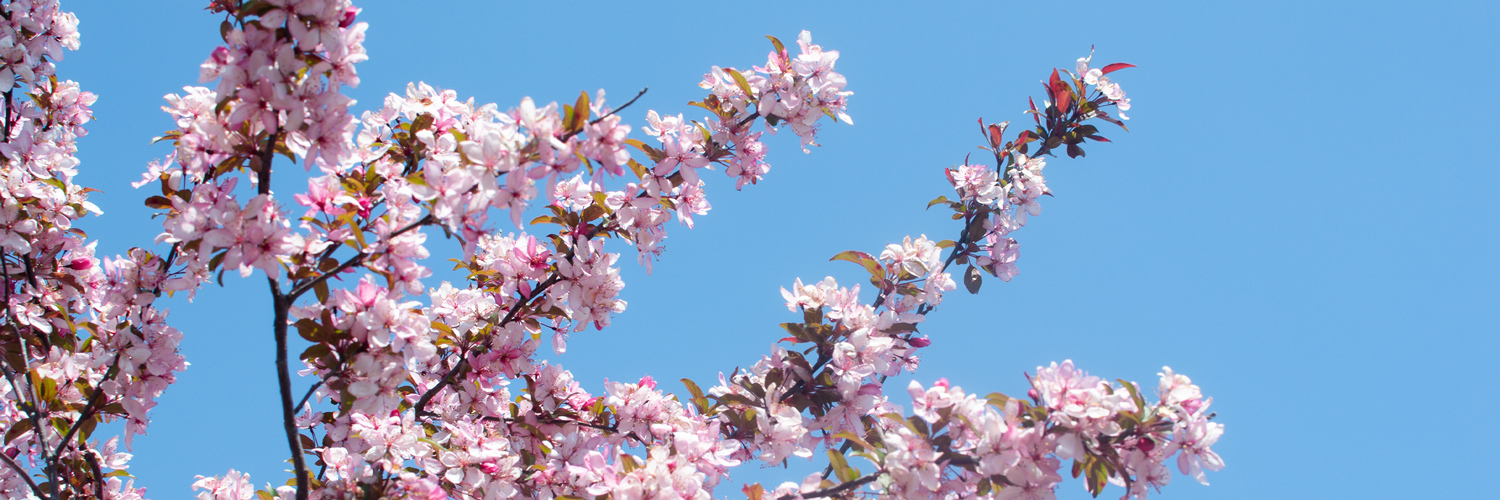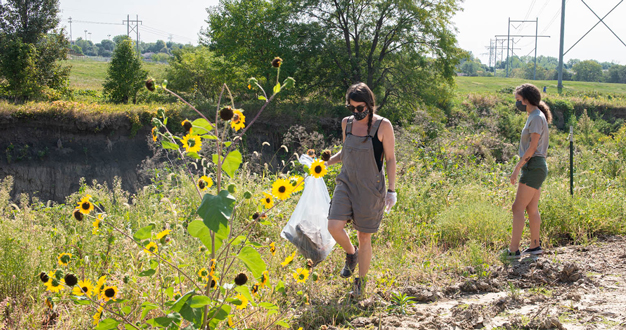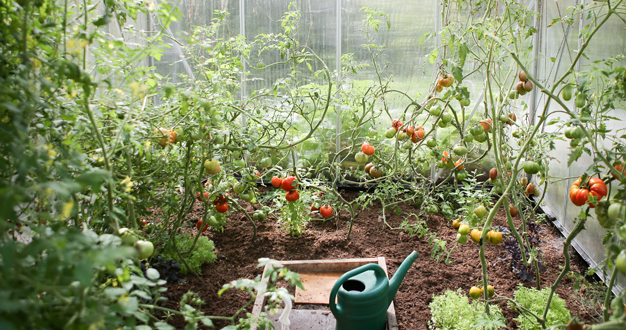
A flowering crabapple tree offers beauty for the landscape in every season. The show begins in April when their bright globes of vividly colored buds and blooms appear all over the city. But the benefits for both human and wildlife communities continue through the summer, fall, and even into the winter. Here we follow a crabapple through the seasons and show why it’s such a wonderful tree to have in your landscape all year long.
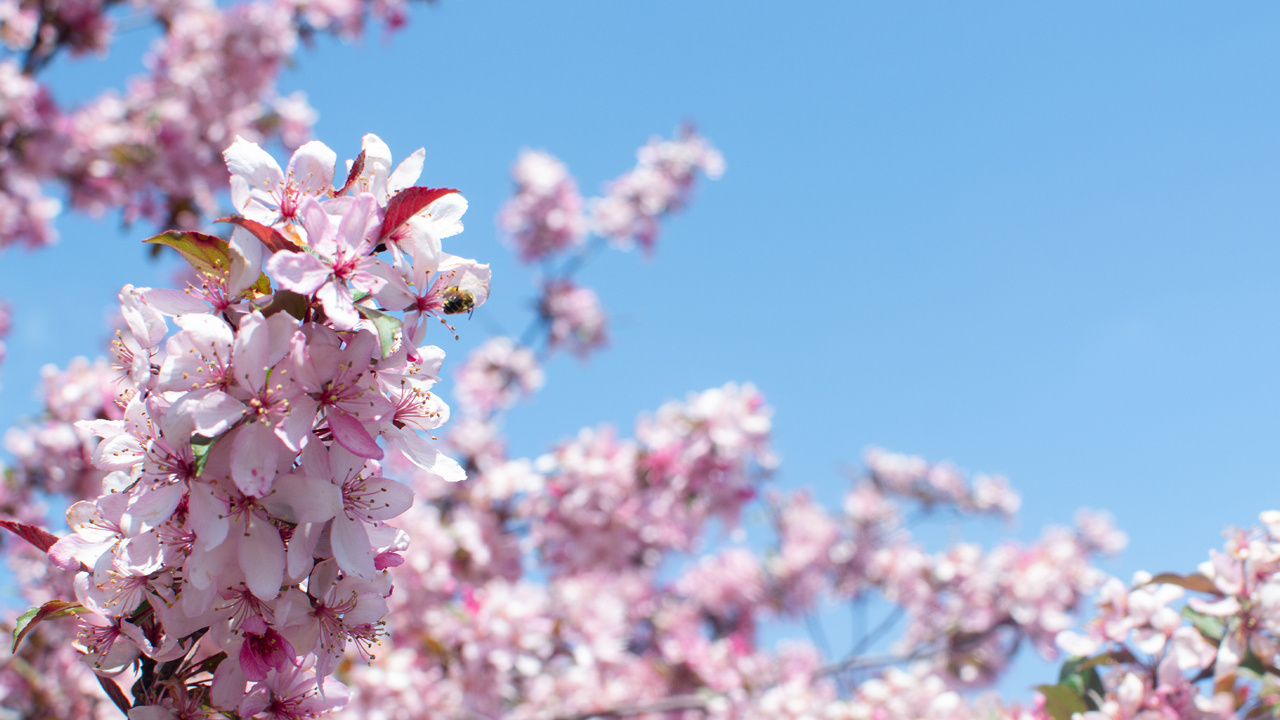
Those Cheerful Spring Blooms
Flowering crabapples bring some of the first and most eye-catching blooms each spring. Beginning in April, branches covered in bright pink, magenta, purple, or white flowers celebrate the arrival of warmer weather and remind us that the growing season is almost here. For more variety, some crabapples even bud in one color and bloom in another – Colorburst® and ‘Snowdrift’ are two examples. But people aren’t the only ones excited to see the flowers – emerging bees and butterflies appreciate the early supply of pollen and nectar too. If you’re lucky, you may even spot a hummingbird stopping for a snack as it migrates north from its winter home in the south.
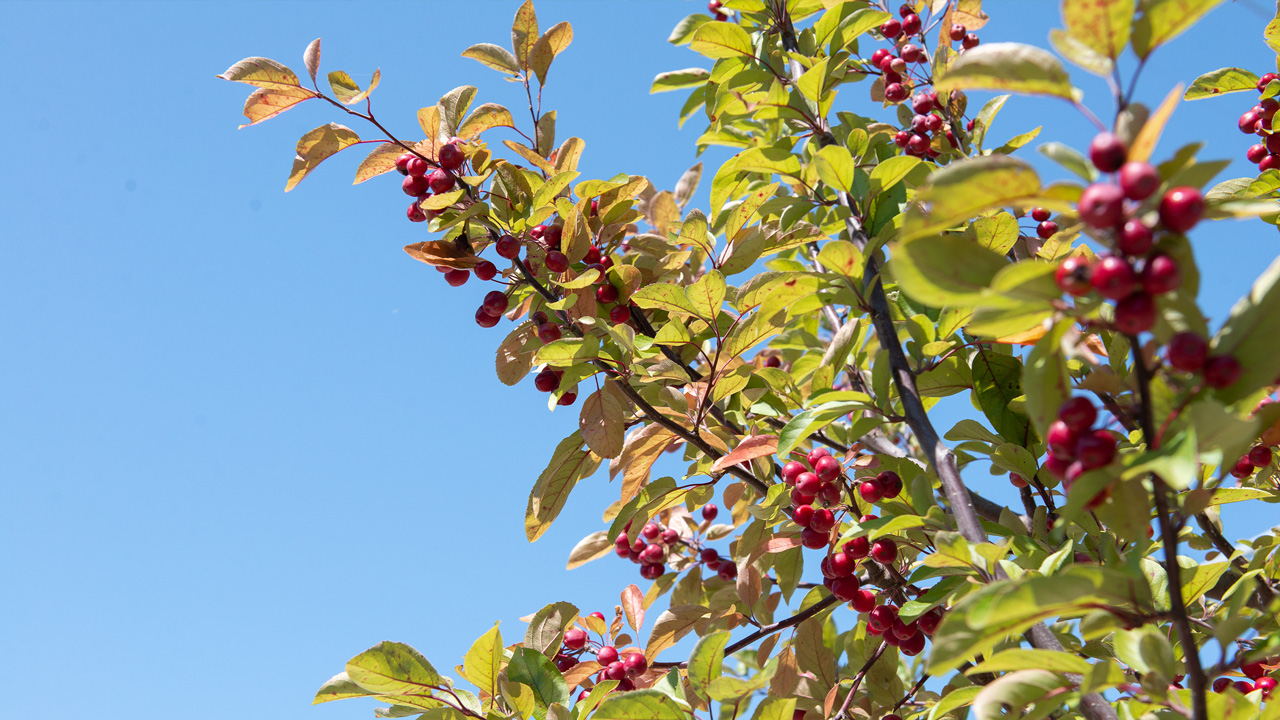
Colorful Foliage Through the Summer + Fall
A crabapple’s spring flower show captures a lot of attention, but its leaves have another color palette to share through the summer too. Depending on the cultivar, a crabapple may display shades of green, purple, and bronze in its summer foliage. And a few run through a kaleidoscope of hues through the year – with leaves emerging one color in the spring, turning another in the summer, and ending the growing season with a fall display too. The cultivar ‘Robinson’ is one example. Its new leaves emerge purple in early spring – a brilliant complement to its red-pink blooms. Later, the purple foliage matures to a bronze-green with reddish veins and petioles. And finally, the leaves turn to a beautiful orange before dropping in the fall.
Fruits for Food + Texture
For your edible landscape, the small, sweet fruits on some crabapples – ‘Profusion’ and ‘Royal Raindrops’ for instance – are great for making jellies. Crabapple fruits are also a valuable resource for neighborhood birds looking for something to eat from late summer and on into the winter months too. But whether anyone eats them or not, the rounded, dangling fruits provide yet another colorful display for the landscape over multiple seasons. Their bright colors – mostly reds, but sometimes shades of orange and purple too – contrast beautifully with the foliage in late summer and fall. If you’re worried about the mess from falling fruit, you’ll be happy to know that today’s cultivars are developed to hold their fruit well into the winter and often hang there until a hungry bird pulls one off.
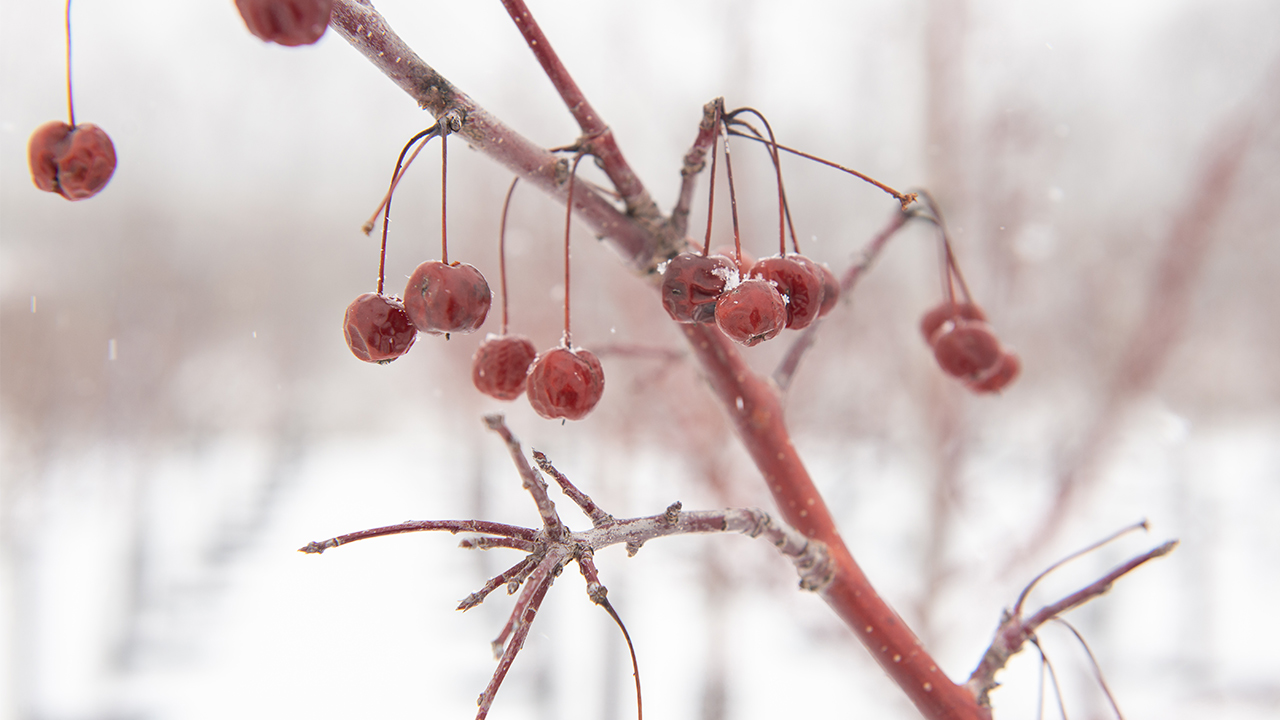
Interest + Color Through the Winter Too
Even when the blooms and foliage are gone, a crabapple’s form and structure are valuable additions to a winter landscape. The branches are roughly textured and twisting – an architectural quality that’s interesting to study from the window. Crabapple trees are densely branched too, so they continue to block views and provide privacy even when the foliage has dropped. And because most crabapples hold their fruit well into the winter, we get to enjoy those little pops of pretty color – as well as the busy activity of foraging winter birds.
A Tree for All the Seasons
If four-season appeal is a top priority for your landscape, we think you’ll love the flowering crabapples. Plus, with all our balled-and-burlapped crabapple trees now 30% off, it’s a great time to add one to your outdoor space. Take a walk through our wide-open Nursery Yard to find the perfect one. And if you need any help choosing, we’ll be glad to talk you through the options to find a beautiful crabapple you’ll love to have brighten your entire year.

